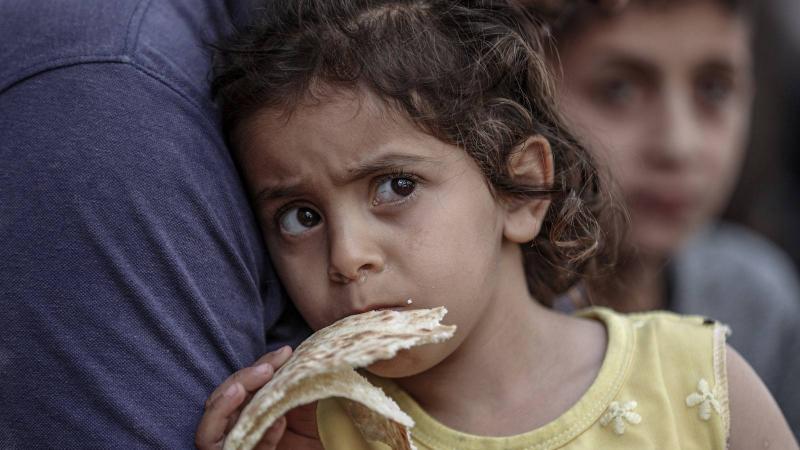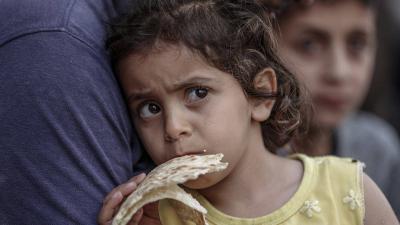The debris and twisted metal rods at the destroyed bakery of Kamal Ajour in the Gaza Strip highlight one reason why people starving in the northern region are resorting to eating thick cactus leaves, nearly five months after the Israeli military campaign. Bread is a vital component in any effort to alleviate hunger, as one in six children in northern Gaza suffers from malnutrition. However, most bakeries have been reduced to rubble due to Israeli bombardment, and flour assistance has become extremely rare.
A crane pulled equipment from the rubble that Ajour hoped to salvage. Inside, metal trays and ovens were badly damaged amidst the debris. The Israeli ceasefire proposal currently being considered by the Palestinian Islamic Resistance Movement (Hamas) could allow for the importation of bakery equipment and fuel to operate ovens. Basal Khair Eldin in Gaza City stated, "The most important thing is to stop the fire and specifically to restart the bakeries so we can find something to eat for ourselves, our children, loved ones, and our families."
With bakeries destroyed or unable to operate due to fuel shortages, people are forced to make bread themselves over fires ignited using wood salvaged from destroyed buildings. It is often impossible to find even a small amount of flour, or it is prohibitively expensive when available. People are making bread from animal feed and grains typically used for feeding birds. Most report that they can eat just once a day at most.
The Al-Awda family sits near an intact home in Jabalia, having turned to eating prickly pear cactus leaves to survive. While the fruit of the prickly pear is commonly eaten throughout the Mediterranean region, the thick, spiky leaves are only consumed by animals in their feed. Marwan Al-Awda, sitting in a wheelchair, is seen removing thorns and cutting pieces of cactus for himself and two small children in a video obtained by Reuters. He said, "We are living in famine. We have exhausted everything. There is nothing left to eat," adding that he lost 30 kilograms due to hunger during the conflict.
*Aid Supplies*
While aid flows to parts of the southern Gaza Strip, albeit very slowly to the point where a hunger crisis cannot be avoided there, it barely reaches the northern regions far from the main border crossing and can only be delivered through the most active combat fronts. The United Nations Office for the Coordination of Humanitarian Affairs stated on Tuesday that a quarter of Gaza's population is one step away from famine, warning that such a disaster would be "almost inevitable" without action.
Israel claims there is no cap on the amount of humanitarian aid delivered to civilians in Gaza. However, the Office for the Coordination of Humanitarian Affairs reported to the Security Council that relief agencies face "huge obstacles," including restrictions on movement, border closures, entry bans, and burdensome monitoring procedures. The Israeli Defense Ministry’s Coordinator of Government Activities in the Territories reported on Wednesday that 31 trucks arrived in northern Gaza overnight, but did not provide details regarding distribution, stating that it is up to the United Nations.
The Office for the Coordination of Humanitarian Affairs noted that the UN did not participate in yesterday’s convoy and that the Israeli army is responsible for coordinating humanitarian operations within the Strip. Israel has claimed that the failure to provide adequate assistance to Gaza to meet humanitarian needs is due to the UN's failure in distribution.
The rare operations to deliver aid to northern Gaza have been chaotic, with desperate crowds often gathering around truck convoys upon their arrival. In Gaza City, Umm Ibrahim expressed hope that an agreement on a ceasefire would lead to the resumption of food supplies to northern Gaza.




